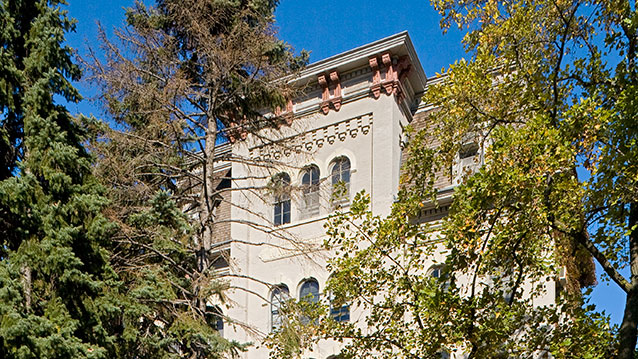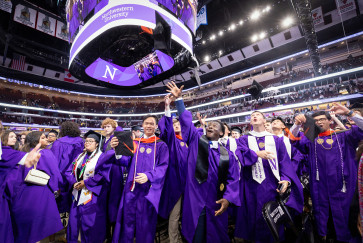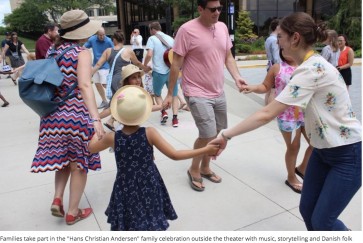EVANSTON, Ill. --- “The first thing you notice is the silence.
“The weathered old building -- which until last month shook with the sounds of pianos thundering, sopranos vocalizing, violins fiddling, students laughing -- barely produces a whisper now.”
Those are the opening words of Howard Reich’s nostalgic look back at the building that until recently housed Northwestern’s renowned school of music -- a place that “churned out tunes like some highbrow jukebox run amok.”
In his richly lyrical piece, Reich, an arts/jazz critic for the Chicago Tribune and a Northwestern alumnus, shares a flood of memories unleashed during his recent poignant visit to the old Music Administration Building.
He acknowledges that the Henry and Leigh Bienen School of Music’s stunning new lakefront structure, with the majestic concert-hall view of the Chicago skyline, will serve students and the listening public far better.
But sharing “cherished” memories during such a formative time of his life, he eloquently brought home the magic that took place in the creaky original building.
“In these halls, great jazz artists such as trumpeter Orbert Davis, singer-pianist Patricia Barber, saxophonist Bunky Green and bassist Rufus Reid grappled with the rigors of their art. So did lyricist Sheldon Harnick ("Fiddler on the Roof"), pianist Ralph Votapek (first winner of the Van Cliburn International Piano Competition), soprano Nancy Gustafson, members of eighth blackbird and Ensemble Dal Niente and thousands of other students,” he said.
Upon entry to the studio where he auditioned for admission to the school, he could “see” the “two gleaming, ebony grand pianos” and “hear” his “hopeful” 18-year-old self playing J.S. Bach, Felix Mendelssohn and the Cuban master Ernesto Lecuona.
The exact purpose of other buildings on Northwestern's campus may have been mysterious, he said. “But there was no question about what was happening beneath the gilded mansard roof of this gloriously anachronistic structure: music, and loads of it, the cacophony piping down for just a few hours overnight, when they locked up the place, forcing practice-obsessed music students to go get some sleep,” he recalled.
The transition from a historic building into a state-of-the-art facility was long overdue, Reich agreed. But before the building is repurposed once more, he wanted to pay tribute to the place “where generations studied a most demanding art, eventually becoming jazz stars, symphony players, church musicians, lounge crooners, teachers, choral directors and arts critics. And I was one of them.”


